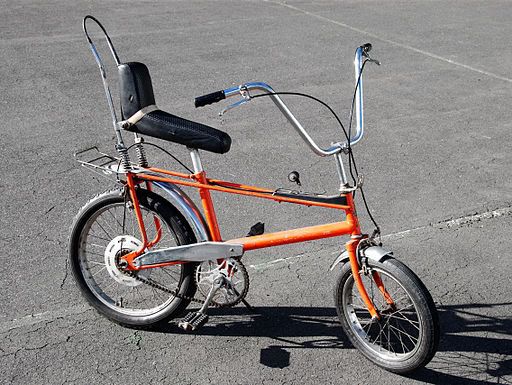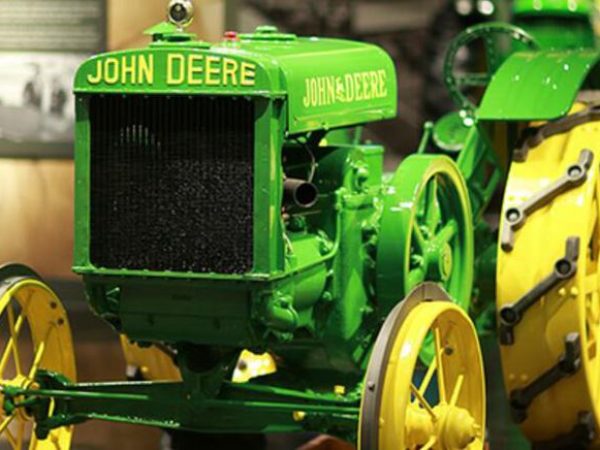Being the oldest global cycling brand, Raleigh revolutionized the biking industry with fine-looking models that evolved with time. Their quality bikes were not just beautiful but very much practical and durable.
From the past to the current day, owning a Raleigh bike has always been a thing to boast about. Lucky are those who get a vintage Raleigh bicycle passed down by their parents or grandparents or get it cheap from some yard sale.
If you happen to be such a lucky person, you would probably be wondering a lot of things like how old is my Raleigh bike or what is my vintage Raleigh bike worth. To help you find out, here’s a comprehensive guide that includes everything from history and dating your bikes to values and models. Read along!
Table of Contents
The History of Raleigh Cycle Company
Being the oldest and most famous cycling brand, Raleigh conquered the biking industry with their inventions and innovations. Due to their wonders, they were the leading manufacturer in the whole UK during the 1970s and 1980s.
However, their success story goes way back in time when the cycling concept was not very prevalent. Here are the early years of the Raleigh bicycle company.
1887 – The Beginning Of Raleigh
After following his physician’s advice in 1887, Sir Frank Bowden bought a bicycle to improve his health. There he discovered his love for cycling and also learned the health benefits of it through first-hand experience.
It immediately encouraged the wealthy businessman, Sir Frank Bowden, to purchase a small bicycle shop in Nottingham, England. It was located in Raleigh, a street in Nottingham, and from there, he named the shop Raleigh Cycle Company.
Within a decade, the company gained immense popularity and sales. To meet the increased demand, Sir Bowden expanded his business into a 5-story factory and became the largest manufacturer of 3-speed utility roadster bicycles around the globe.
Moreover, due to rapid growth, technical advancements, and increased production, the Raleigh company exhibited 23 designs at the Stanley Cycle Show in 1890.
The company’s expertise was further assured when Arthur Augustus Zimmerman rode a 24 pounds Raleigh bike featuring the first radial laced wheel and became the Road Cycling World Champion in 1892.
Raleigh continued to top their popularity by giving out fine advancements to the biking world. During the next few decades, the company covered some crucial aspects with its innovations. Some of them include:
- The tubular fork crown – 1892
- Cross frame – 1896
- Back peddling brake and silent freewheel hub – 1899
- Three-speed hub under the name Sturmey-Archer – 1903
The 1920s
Bicycles were highly appreciated as one of the easiest and quickest modes of transportation. However, in the 1920s, the popularity of cars was also on the rise. Despite everything, the company was manufacturing 100,000 cycles and 250,000 hub gears as well as 15,000 motorcycles and 50,000 motorcycle gearboxes annually.
Second World War (1939-45)
During the Second World War, Raleigh shifted its priorities towards making military weapons and ammunition. In 1939, they manufactured folding bikes specially designed for paratroopers to assist them in WWII.
Surprisingly, the company saw healthy sales and production of 5,400 cycles per week, and they experienced success despite the uncertain war times.
After the Second World War, Raleigh launched rims that worked with the caliper, pull-up brakes, and also with new metallic finishes.
1948 – The Signing Of Reg Harris
In 1948, Reg Harris, a British track racing cyclist, won two silver medals in the Olympics – one individually and the other in Tandem sprints. These wins convinced Raleigh to sign Reg as a professional rider. Even today, his famous red Raleigh bike is safe in Raleigh HQ.
1969
Raleigh introduced their only Chopper to the market in 1969, and it sold over 1.5 million units. The response from consumers was enough to ensure a follow-up model of this famous bike.
Therefore, Raleigh launched Grifter in 1976, which somewhat resembled a BMX bike but had mudguards and a 3-speed hub.
The 1980s and Onwards
In the 1980s, Raleigh launched the Burner series, which was the must-have bike of the time. The release was a success, and the company sold over a million units across the globe.
Alongside the launch of the Burner series, the company heavily invested in a BMX team that featured Craig Schofield and Andy Ruffell, the most popular members of the team.
In 1985, the same team participated in the World Championships in Canada, which was a massive event with 14 nations, 680 riders, and 28 classes participating. The Raleigh BMX team came in 5th position, and Craig Schofield, with his Raleigh Team Aero Pro Burner bike, won the superclass 20-inch title.
Furthermore, in the 90s, Raleigh became the first Uk bicycle manufacturer to mass-manufacture suspension mountain bikes and the first one to market electrically assisted bicycles.
The company didn’t stop here. In 2004, after the wait of 30 years, they relaunched their iconic Raleigh Chopper from 1970. The classic 1970s chariot-like model once again hit the streets and instantly became popular with children and adults alike.
In 2012, there was a significant change in the company. The Accell Group – a Netherlands-based one of the largest European bicycle companies with 18 bicycle brands – bought Raleigh.
The new ownership helped the company a lot. With the shared technologies and advancements, the products made improvements and are still making improvements.
How Old Is My Raleigh Bike? Dating Tips
When you have a vintage Raleigh bike, you always wonder about how old is my Raleigh bike, and undoubtedly the most crucial thing is to determine its manufacturing date.
However, the Raleigh company has been in the business for over a century. During this period, they have manufactured countless models every decade, making it close to impossible to track down the age of old ones.
But worry not! There is a way, a bit comprehensive way to date your vintage Raleigh bikes. Read along!
1. Check the Serial Number
When determining the age of your Raleigh bike, the first thing you need to do is look for the serial number. A serial number is just a code-like number that represents the model and the production year. It is stamped onto the bikes during the manufacturing process.
Usually, you will find it on the bottom bracket, front of the seat lug, under the seat, or sometimes on its side. Although this is the shortest route to find the necessary data, you can often get misled if your bike has missing or replaced parts.
Apart from the above unfortunate scenario, Raleigh has a specific pattern of putting serial numbers on their bikes. Once you know how to decode these numbers, determining your Raleigh bike’s age is just a walk in the park. So let’s try to understand the concept, shall we?
1947 To 1955
In their early period from 1947, the company used six digits followed by a letter P or T in serial numbers. Excluding the year 1948, they manufactured bikes with the same convention until 1950.
In 1948, Raleigh used a slightly different pattern of serial numbers that had 4 to 5-digit numbers followed by random two letters. For instance, the serial number could be anything like 12345AB. And from the mid-1950s onwards, the letter T was in use.
1955 To 1964
The serial system updated and got a prefix RB or RA followed by 4 to 5-digit numbers. During this period, Raleigh introduced the letter N in its serial system. The company was manufacturing these models in Nottingham, which explains the inclusion of the letter N in their serial numbers.
1963 To 1969
The company once again updated their serial system, and this time they included a series of seven digits that you can find at the bottom bracket.
1970 To 1972
In 1972, Raleigh went back to its old serial system with 5 to 6 digits. During this period, the serial number never exceeded six digits, and this way, the Super Course and Grand Prix models were marked.
1973
Popular Raleigh models like Grand Prix, Super Course, and Grand Sports tend to have a more recognizable serial system. The most famous models contained a convention of seven digits starting with zero.
To find out whether you have a famous model in your possession, look for the number outside the left dropout of your bicycle.
1973 To 1982+
The company standardized the serial system in the following decades. Each model was given a serial number starting with two letters and followed by a six digits series. The first letter always represents the production factory where the model was produced. The representation is something like:
- N for Nottingham
- H for Handsworth
- W for Workshop
- G for Gazelle
- D for Ireland
- E for Enid, USA
- R for Canada
- M for Malaysia
2. Raleigh USA Serial System
It was a special type of serial system only applicable to frames manufactured in Japan or Taiwan. The numbers were stamped on the bottom bracket.
3. Team Professional Serials (SBDU)
It is the current serial system of the company, usually for the models built in Raleigh’s Ilkeston factory. The serial starts with an SB letter, followed by four numbers.
4. Seat Shapes
Over the years, the company introduced several changes to its Raleigh bike features. So if you cannot locate your Raleigh bike serial number, you can still try to determine its age by observing these changes.
For instance, the Raleigh bikes from the 1960s and 1970s had elongated seats, while those models from the 1980s had wider and cushioned seats. By observing these differences, you can somewhat estimate your Raleigh bike’s age.
However, this tip will only be helpful if the seat is original and not replaced by any other model.
5. Original Color
Keeping in mind the set trends and demands of the particular period, the company painted vintage Raleigh bicycles in the most trendy colors of the time. For instance, the models that came in the 1960s and 1970s had vibrant colors like orange, rust red, and green.
Similarly, the Raleigh bikes from the 1980s had white, blue, and red painted bodies.
So if your vintage Raleigh bicycle has its original color, you can look back into the past trends and guess the decade in which it was manufactured.
6. Handlebars
Other than color, you can also determine the age of your Raleigh bike by observing its handlebar design. High-rise bicycles with U-shaped handlebars, the ones that resembled a motorcycle, were the top trend in the 1960s and 1970s.
So by looking at your vintage bike’s design, you can come to some conclusion.
7. Number Of Speeds
Most bicycles manufactured by Raleigh from the 1950s to the 1980s had three or five speeds. It was until the 1970s that the first ten-speed bike appeared on the American market. Check which one is yours.
8. Check for the Specific Parts
Luckily, if your vintage Raleigh bike has all its components and parts never replaced, you can learn the age more conveniently. You will need to inspect the frame, suspension forks, and shifters that are often made for a particular period.
Different Vintage Raleigh Bike Models
As we know, Raleigh’s 3-speed bikes were a popular mode of transportation from the 1930s to the 1970s until 10-speed bikes came. During this time, there were many different models released in the market. However, they all fall into one of the three classes below.

Roadsters
Before the 1930s, it was difficult to ride on rocky surfaces and dirt roads without needing continuous maintenance for your rides. But then came the durable Roadsters, and filled this gap. Worth appreciating the innovations, this model was widely popular in the English countryside.
Interestingly, the model featured a roller-lever brakes system that used rods instead of cable for the braking mechanism. Moreover, its design included:
- A 68° or less shallow frame angle,
- Westwood rims,
- 28 x 1 1/2 inch wheels,
- Long wheelbases and cranks,
- Gear case,
- And a chain enclosed by a chain guard.

Sports Bicycles
Sports bicycles, aka light roadsters, were simply lighter and faster than roadster bikes. Being a quick ride, it was the basic mode of transportation for most working class in English cities. To make it lighter and faster, most manufacturers produced sports bicycles with similar designs and features like:
- 72° frame angle,
- 26 x 1 3/8 wheels,
- Patterned rims,
- Full steel fenders
- And Cable brake system.

The Raleigh Chopper
Designed to cater to young ones, the Raleigh Chopper was one of the favorite vintage Raleigh bicycles. With all the innovations out in front, the model was marketed in the late 1960s. It had lots of features, including:
- Long padded seat,
- Backrest,
- High-rise handlebars (aka ape hangers),
- 16-inch front and 20-inch rear wheel,
- 3-speed Sturmey-Archer gear hub,
- Gear lever mounted on the frame,
- And Short fenders.
There were many full-size as well as small-size versions of Chopper that were released in the market. Some of them were:
- Mk 1
- Glider Fastback 100
- Mk 2
- The Sprint
- The Rodeo
Price Of Vintage Raleigh Bikes
In the current collectible market, vintage Raleigh bicycles can value around several hundred dollars on average. And naturally, a vintage model in running condition and with all original components will go for a lot more.
No discrimination here, but smaller-framed women’s and children’s bikes from the same manufacturer sell at a much cheaper value than the men’s bigger-frame versions. Due to the lower demand for women’s bikes, the prices are lower too.
Unlike other collectibles, vintage bicycles have fewer collectors. Some of them collect these bikes for their quality, durability, and aesthetics, while others, including many men, collect them for the nostalgia of their childhood when they would ride their bicycles all day.
Therefore, Raleigh bikes in working condition, with multiple speeds, and in adult-sized frames yield the best deals. For instance, a 1971 Raleigh Professional 23 1/2″ model was sold on eBay for a thousand dollars.
Furthermore, Raleigh models from the 1970s and 1980s tend to be more in demand than those from the post-war period. You might be thinking, the older a collectible is, the more value it has – that’s the science of the antique world! Right?
However, in the case of Raleigh bikes, the nostalgic-driven generation would settle for the bikes from the 1970s onwards as they will most likely be in running condition and have a vintage vibe too. A win-win situation.
It also doesn’t mean there is no demand for old Raleigh models. Some dedicated collectors would go for the models from the immediate post-war period.
What Things To Consider When Buying a Vintage Bicycle
When going to buy a vintage bicycle, keep a few things in mind to save yourself from the after-regret. Here are some valuable tips from a person who collected over sixty bikes in the last decade and the mistakes he made that you can avoid! Watch the video to learn more.
Conclusion
Summing up, Raleigh was and still is on top of the game with their quality bicycles. Their unique starting story and the rest of their comprehensive history motivated people to own a Raleigh bike.
If you own one of their vintage models, you might be clueless about its age, worth, and maybe model too. But now, with the help of this guide, we hope you can see a clearer picture of your vintage bike.
However, if you have any unanswered questions in mind, drop them in the comment box, and we will get right back to you!







